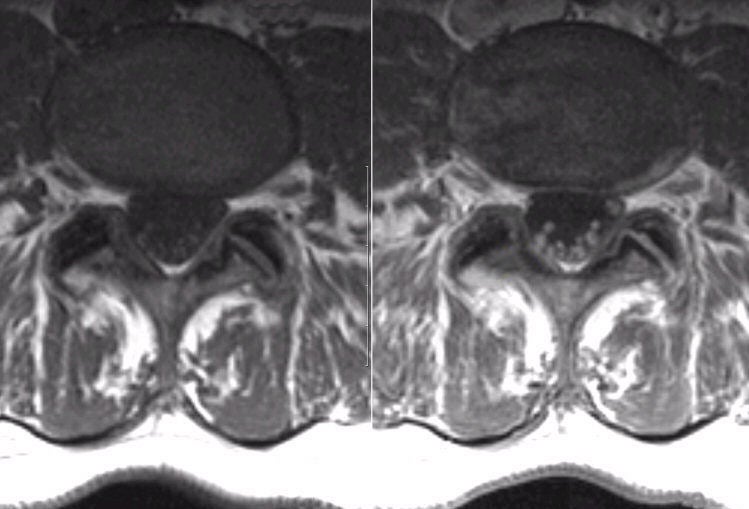
|
A 33 year-old man presented with progressive pain, weakness and sensory loss in both legs. His examination showed absent reflexes in the lower extremities, paraparesis and decreased sensation in the lower extremities. |

![]()
| Cauda Equina Infiltration by Cancer:
(Left) T1-weighted axial MRI; (Right) T1-weighted with
gadolinium axial MRI. Note
on the contrast scan on the right that all of the nerve roots enhance and are also moderately enlarged.
Nerve root enhancement can be seen in a variety of inflammatory and infiltrative disorders, including Guillain Barré syndrome and chronic inflammatory demyelinating polyneuropathy. However, with nerve root enlargement and clumping, as in this case, the etiology is more likely infiltrative. Subsequent evaluation of this patient demonstrated metastatic carcinoma of the stomach. Without a known primary tumor, the diagnosis of infiltration of the nerve roots from metastatic tumor can be very difficult to make. Even when the tumor cells are adherent to the nerve roots, CSF cytology often shows only a reactive lymphocytosis without frank tumor cells. In some cases, nerve root biopsy is necessary. |
Revised
11/16/06
Copyrighted 2006. David C Preston